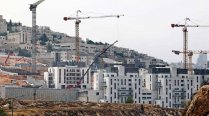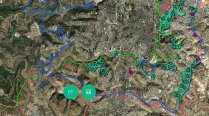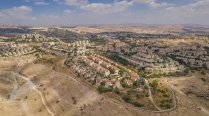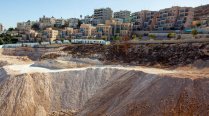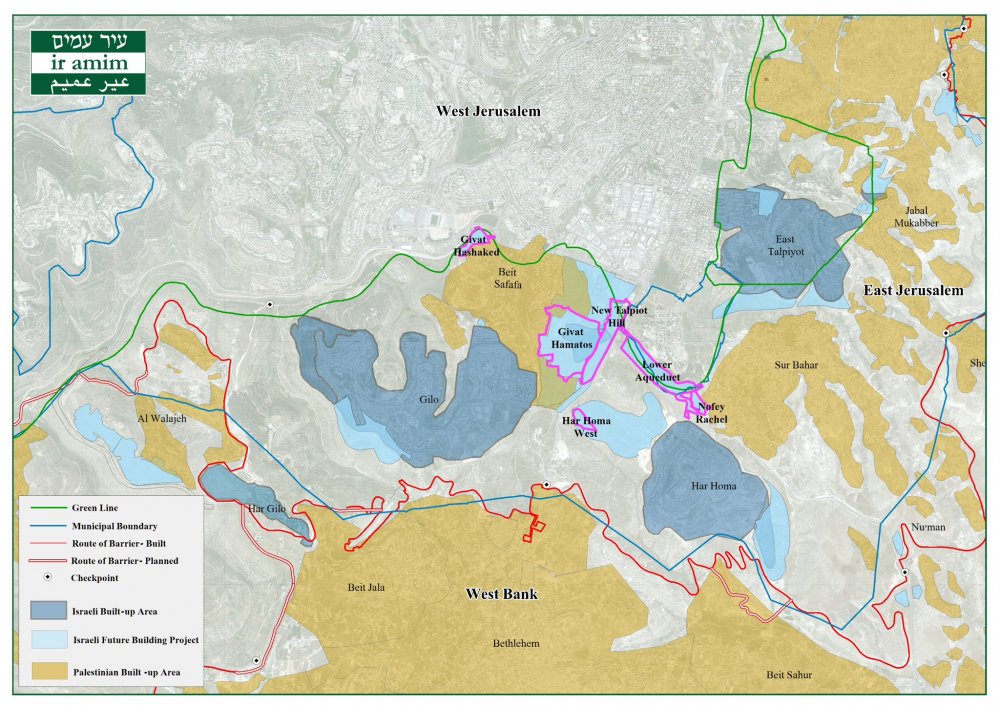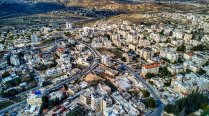Last December, the Jerusalem District Planning Committee, part of the Jerusalem municipality, approved two major settlements while promoting a third. All three settlement plans would cut off East Jerusalem from the rest of the West Bank.
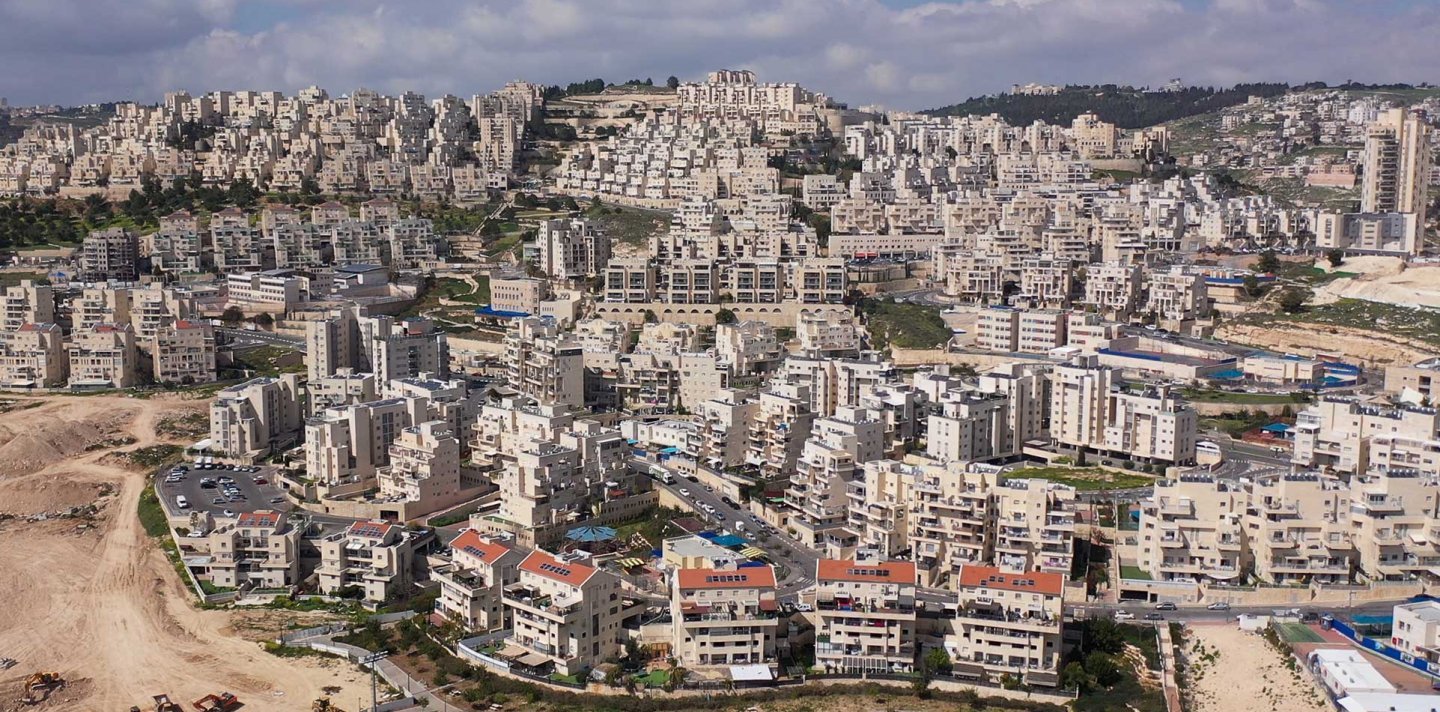
Credit:
iStock Photo
Under Cover of War, Israel Charges Ahead with Severing East Jerusalem from the West Bank through Settlements
Snapshot
With the world’s attention on Gaza, Jerusalem municipal authorities are swiftly advancing Israeli settlements, which threaten to separate East Jerusalem from the rest of the West Bank and further Judaize the city.
Lower Aqueduct Settlement
On December 4, 2023, the Jerusalem District Planning Committee gave final approval to the Lower Aqueduct settlement, making it the first settlement plan in East Jerusalem to be fully approved in over a decade.1
Entitled the Lower Aqueduct project (referring to Jerusalem’s ancient water system), the plan (TPS 808840) calls for constructing nearly 1,800 housing units on 46 acres of land on both sides of the Green Line, between the Israeli settlements of Har Homa and the planned Givat Hamatos settlement; west of Sur Bahir, a large Palestinian neighborhood; and adjacent to Umm Tuba. The Jerusalem-focused Israeli nonprofit Ir Amim told the Times of Israel that private property belonging to residents of Umm Tuba would likely be expropriated to construct an access road for the new settlement; the road would be built over the Green Line. Israeli building beyond the Green Line is considered a violation of international law.2
Nofey Rachel
Bordering where the Lower Aqueduct settlement is to be built, Ir Amim reports another settlement plan is being promoted. Entitled Nofey Rachel, it calls for 650 housing units in the Palestinian neighborhood of Sur Bahir-Umm Tuba.3
“The new plan will extend the Israeli territorial continuum between Har Homa, the Lower Aqueduct, and Givat Hamatos, which further seals off the southern edge of East Jerusalem from Bethlehem and the southern West Bank,” Ir Amim said in its press release on the plan.4
Ir Amim further noted that the area designated for Nofey Rachel is currently undergoing settlement of land title (SOLT) and is in the final stage of this process. SOLT is essentially land registration, a common procedure across the world to finalize who owns a particular plot of land. In Jerusalem, however, it is a highly politicized process used to transfer lands on way—from Palestinian to Jewish ownership, a process that is currently being aggressively applied throughout the city (see Land Registration in Jerusalem Is a “Grand Land Theft” from Palestinians—Ir Amim’s Amy Cohen).
The Nofey Rachel company, whose shareholders are the same individuals behind settlement endeavors in the Palestinian neighborhoods of Umm Lison and Jabal Mukabbir, submitted the plan and claim to have purchased the plot in question in 2019.5 The fact that Nofey Rachel is being advanced on land undergoing SOLT suggests that the settlers, in collaboration with the Israeli government, aim to claim the Palestinian land as Jewish-owned.
“This further confirms that the [SOLT] process is being exploited to register land in East Jerusalem in the name of Jews and/or the state for the promotion of settlements, while contradicting the government’s claim that it is intended to promote property rights of Palestinians,” Ir Amim said in its press release.6
Givat HaShaked
On January 9, 2024, the District Planning Committee approved the Givat HaShaked settlement, which includes plans to build nearly 700 housing units on lands belonging to the Palestinian village of Beit Safafa.7 (Prior to 1948, Beit Safafa was part of Palestine’s Jerusalem Governorate.) According to Ir Amim, while the approval hasn’t been formally published in the public record (unlike the Lower Aqueduct settlement, which has), it could receive final approval from municipal authorities within the next month.8
Implications of the Three Settlement Proposals on Jerusalem
“This line of settlements is totally closing Bethlehem off from Jerusalem, disrupting the historical connection between Jerusalem and Bethlehem,” Jamal Juma‘ told Jerusalem Story. Juma‘ is the general coordinator for Stop The Wall, a Palestinian grassroots campaign against the Separation Wall.9
Juma‘ explained how the Lower Aqueduct settlement, in particular, cuts off Umm Tuba from Bethlehem, a city frequented by the village residents. Juma‘ described it as part of Israel’s plan to isolate Palestinian East Jerusalem from the rest of the West Bank and pull Palestinian communities apart.
The encirclement of the Old City with settlements began at the end of 1967, Juma‘ asserted. “[The Israelis] are closing [all of] Jerusalem, filling it with colonies and making Palestinian communities in the city and around it like puzzles—like communities fragmented here and there.”
Juma‘ explained this settlement is part of a larger Israeli plan, established during the 2002 Herzliya Conference, an annual event discussing state policy, to disconnect East Jerusalem and the West Bank.
This is executed through the strategic construction of the Separation Wall, allowing for Israeli settlements built in the West Bank to be absorbed into what’s considered “Greater Jerusalem.”
“Within this new wall that they designed, [around] 200,000 settlers became part of so-called Greater Jewish Jerusalem, and [in doing so] they ethnically cleansed 22 Palestinian villages from [historical Jerusalem],” Juma‘ said. Juma‘ explained that Abu Dis, Shu‘fat refugee camp, and Hizma are just a few of the Palestinian villages severed from the city by the wall (see Neighborhoods beyond the Wall).
Ir Amim’s international advocacy director, Amy Cohen, explained to Jerusalem Story that severing Palestinian areas carries wider geopolitical ramifications as well. “If we’re talking about a viable two-state framework, then there has to be territorial continuity for Palestine, for a future Palestine with a future capital in East Jerusalem,” Cohen said. “The more that you fragment that space and you create this Israeli built-up area along the southern perimeter, the more it creates a wedge [between East Jerusalem and Bethlehem].”10
According to Ir Amim, in 2022 and 2023, the number of settlements advanced (pushed forward in the approval process) in East Jerusalem was the highest in the last decade.11 As Israel’s war on Gaza enters its fourth month, Cohen sees Israel as exploiting the ongoing war on Gaza “to create more facts on the ground.”
Beyond the Lower Aqueduct settlement’s significant geopolitical consequences, it also affects Palestinians’ housing rights by virtue of the seizure of Palestinian land that could be used for building housing. The Lower Aqueduct, along with Givat HaShaked and Nofey Rachel, are prime examples of the Israeli government’s double standards when it comes to residential development in Jerusalem.
“[The Lower Aqueduct] is on the land of Sur Bahir and Umm Tuba,” Juma‘ said. “[Israel] didn’t leave any space for the Palestinian communities there to grow or to expand.”
In 2020, Israeli estimates are that Palestinians constituted just over 38 percent of the population within the municipal boundaries of Jerusalem.12 Yet Israel hasn’t planned or built a new neighborhood for Palestinian residents since it occupied the eastern part of the city in 1967.13 Indeed, the city recently cancelled a new planned neighborhood that Palestinians had worked to develop for 15 years. For this and other reasons having to do with the city’s approach to urban planning to secure a Jewish demographic majority, Palestinians in the city face a severe housing shortage. Because they are not generally able to get building permits, they are often left with no choice but to build illegally.14 And then their homes and businesses are demolished on the pretext that they are built without permits.
All of this serves Israel’s overarching goal of maintaining a Jewish majority in Jerusalem.
“Such inequitable urban planning policy has long served as a driver of Palestinian displacement in service of solidifying a Jewish demographic majority in Jerusalem and further cementing Israeli territorial control to foil prospects for a just political resolution,” Ir Amim said in its press release on the Lower Aqueduct plan.15
Juma‘ explained that while the Lower Aqueduct and similar settlement plans fragment Palestinian society, ultimately the Israeli goal is pushing Palestinians out of Jerusalem.
“The first plan was to isolate Jerusalem from the rest of the West Bank and mark what is so-called Greater Jewish Jerusalem,” Juma‘ said. “The second plan, that continues now, is to get rid of as many Palestinians as you can from the city, in any way you can.”
Notes
“Israel Approves Lower Aqueduct Plan—the First New Major Settlement Plan Approved in East Jerusalem in over a Decade,” Ir Amim, December 4, 2023.
Jeremy Sharon, “New Jewish Neighborhood Partly in East Jerusalem Given Final Approval,” Times of Israel, December 5, 2023.
“New Settlement Plan.”
“New Settlement Plan.”
“New Settlement Plan.”
Ir Amim English (@IrAmimAlerts), “Today, the state published its approval of the Givat Shaked settlement plan for 695 HU on lands in the Palestinian neighborhood of Beit Safafa in EJ,” X, January 9, 2024, 6:08 p.m.
Text communication with Amy Cohen, January 10, 2024.
Jamal Juma‘, interview by the author, January 10, 2024. All subsequent quotes from Juma‘ are from this interview.
Amy Cohen, interview by the author, December 11, 2023. All subsequent quotes from Cohen are from this interview.
“New Settlement Plan.”
Omer Yaniv, Netta Haddad, and Yair Assaf-Shapira, Jerusalem Facts and Trends 2022 (Jerusalem: Jerusalem Institute for Policy Research, 2022), 20. Reflects the number of Palestinians entered in the Israeli Population Registry (including both citizens and permanent residents). Unregistered persons and persons with Palestinian Authority IDs living in Jerusalem may number in the thousands or tens of thousands, but are not counted in this source. Therefore, the percentage is likely higher.
Nir Hasson, “After 15 Years of Planning, Jerusalem Backtracks on Building New Palestinian Neighborhood,” Haaretz, April 19, 2023.
Hasson, “After 15 Years.”
“Israel Approves Lower Aqueduct Plan.”

